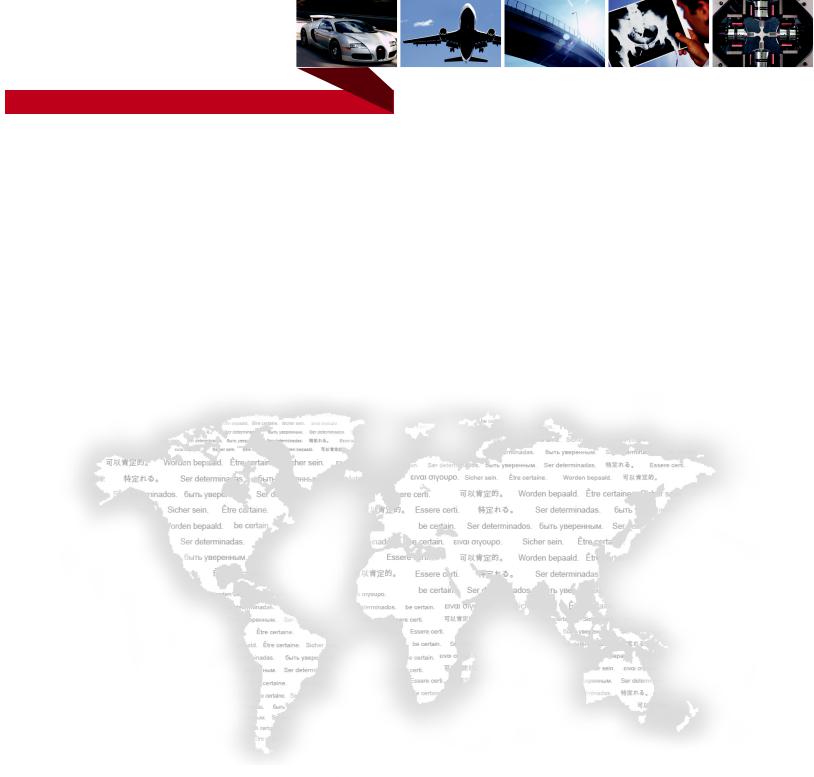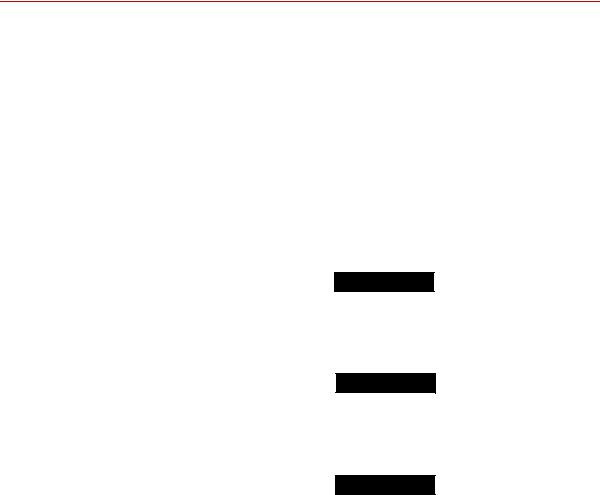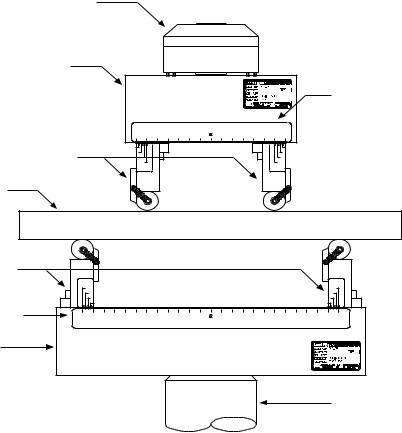MTS 642 User Manual

m
be certain.
Series 642 Bend Fixtures
Product Information
Model 642.001
Model 642.01
Model 642.10
Model 642.25
015-207-701 F
Copyright information Trademark information
© 1999 - 2010 MTS Systems Corporation. All rights reserved.
MTS is a registered trademark of MTS Systems Corporation within the United States. This trademark may be protected in other countries.
DTE is a registered trademark of Mobil Corporation. Tellus is a registered trademark of Shell Oil Corporation. Molykote is a registered trademark of Dow Chemical Corporation. All other trademarks or service marks are property of their respective owners.
Publication information |
MANUAL PART NUMBER |
PUBLICATION DATE |
|
|
|
|
|
|
015-207-701 A |
June 1999 |
|
|
|
|
|
|
015-207-701 B |
September 1999 |
|
|
|
|
|
|
015-207-701 |
C |
August 2000 |
|
|
|
|
|
015-207-701 |
D |
February 2002 |
|
|
|
|
|
015-207-701 E |
March 2008 |
|
|
|
|
|
|
015-207-701 |
F |
March 2010 |
|
|
|
|
2 |
manual name |

Contents
Technical Support |
5 |
|
|
|
|
|
|
|
|
|
|
|
|||
How to Get Technical Support |
5 |
|
|
|
|||
Before You Contact MTS |
5 |
|
|
|
|
||
If You Contact MTS by Phone |
6 |
|
|
|
|||
Problem Submittal Form in MTS Manuals |
7 |
|
|||||
Preface 9 |
|
|
|
|
|
|
|
|
|
|
|
|
|
|
|
Before You Begin |
9 |
|
|
|
|
|
|
Conventions |
10 |
|
|
|
|
|
|
Documentation Conventions |
10 |
|
|
|
|||
Introduction |
13 |
|
|
|
|
|
|
|
|
||||||
Series 642 Bend Fixture Functional Description |
13 |
||||||
Series 642 Bend Fixture Component Identification 14 |
|||||||
Series 642 Bend Fixture Specifications |
16 |
|
|
||||
Safety Information |
23 |
|
|
|
|
|
|
|
|
|
|||||
General Safety Practices: Grips and Fixtures |
23 |
|
|||||
Hazard Placard Placement |
28 |
|
|
|
|||
Installation |
29 |
|
|
|
|
|
|
|
|
||||||
Install Bend Fixtures—Servohydraulic Systems |
29 |
||||||
Install Model 642.001 Bend Fixtures—Electromechanical Systems 35 |
|||||||
Install Model 642.01, 642.10, and 642.25 Bend Fixtures—Electromechanical Systems 36 |
|||||||
Operation |
37 |
|
|
|
|
|
|
|
|
|
|||||
Run a Test with Series 642 Bend Fixtures |
37 |
|
|||||
Change Rollers—Model 642.001 Bend Fixtures |
41 |
||||||
Change Rollers—642.01, 642.10, and 642.25 Bend Fixtures 42
Series 642 Bend Fixtures Product Information |
Contents |
3 |
4 |
Contents |
Series 642 Bend Fixtures Product Information |

Technical Support
How to Get Technical Support
Start with your manuals
Technical support methods
MTS web site
www.mts.com
Telephone
Fax
The manuals supplied by MTS provide most of the information you need to use and maintain your equipment. If your equipment includes MTS software, look for online help and README files that contain additional product information.
If you cannot find answers to your technical questions from these sources, you can use the internet, e-mail, telephone, or fax to contact MTS for assistance.
MTS provides a full range of support services after your system is installed. If you have any questions about a system or product, contact MTS in one of the following ways.
The MTS web site gives you access to our technical support staff by means of a Technical Support link:
www.mts.com > Contact Us > Service & Technical Support
techsupport@mts.com
MTS Call Center 800-328-2255
Weekdays 7:00 A.M. to 5:00 P.M., Central Time
952-937-4515
Please include “Technical Support” in the subject line.
Before You Contact MTS
Know your site number and system number
MTS can help you more efficiently if you have the following information available when you contact us for support.
The site number contains your company number and identifies your equipment type (material testing, simulation, and so forth). The number is usually written on a label on your MTS equipment before the system leaves MTS. If you do not have or do not know your MTS site number, contact your MTS sales engineer.
Example site number: 571167
When you have more than one MTS system, the system job number identifies which system you are calling about. You can find your job number in the papers sent to you when you ordered your system.
Example system number: US1.42460
Series 642 Bend Fixtures Product Information |
Technical Support |
5 |
Know information from prior technical assistance
Identify the problem
Know relevant computer information
Know relevant software information
If you have contacted MTS about this problem before, we can recall your file. You will need to tell us the:
•MTS notification number
•Name of the person who helped you
Describe the problem you are experiencing and know the answers to the following questions:
•How long and how often has the problem been occurring?
•Can you reproduce the problem?
•Were any hardware or software changes made to the system before the problem started?
•What are the model numbers of the suspect equipment?
•What model controller are you using (if applicable)?
•What test configuration are you using?
If you are experiencing a computer problem, have the following information available:
•Manufacturer’s name and model number
•Operating software type and service patch information
•Amount of system memory
•Amount of free space on the hard drive in which the application resides
•Current status of hard-drive fragmentation
•Connection status to a corporate network
For software application problems, have the following information available:
•The software application’s name, version number, build number, and if available, software patch number. This information is displayed briefly when you launch the application, and can typically be found in the “About” selection in the “Help” menu.
•It is also helpful if the names of other non-MTS applications that are running on your computer, such as anti-virus software, screen savers, keyboard enhancers, print spoolers, and so forth are known and available.
If You Contact MTS by Phone
Your call will be registered by a Call Center agent if you are calling within the United States or Canada. Before connecting you with a technical support specialist, the agent will ask you for your site number, name, company, company address, and the phone number where you can normally be reached.
6 |
Technical Support |
Series 642 Bend Fixtures Product Information |
Identify system type
Be prepared to troubleshoot
Write down relevant information
After you call
If you are calling about an issue that has already been assigned a notification number, please provide that number. You will be assigned a unique notification number about any new issue.
To assist the Call Center agent with connecting you to the most qualified technical support specialist available, identify your system as one of the following types:
•Electromechanical materials test system
•Hydromechanical materials test system
•Vehicle test system
•Vehicle component test system
•Aero test system
Prepare yourself for troubleshooting while on the phone:
•Call from a telephone when you are close to the system so that you can try implementing suggestions made over the phone.
•Have the original operating and application software media available.
•If you are not familiar with all aspects of the equipment operation, have an experienced user nearby to assist you.
Prepare yourself in case we need to call you back:
•Remember to ask for the notification number.
•Record the name of the person who helped you.
•Write down any specific instructions to be followed, such as data recording or performance monitoring.
MTS logs and tracks all calls to ensure that you receive assistance and that action is taken regarding your problem or request. If you have questions about the status of your problem or have additional information to report, please contact MTS again and provide your original notification number.
Problem Submittal Form in MTS Manuals
Use the Problem Submittal Form to communicate problems you are experiencing with your MTS software, hardware, manuals, or service which have not been resolved to your satisfaction through the technical support process. This form includes check boxes that allow you to indicate the urgency of your problem and your expectation of an acceptable response time. We guarantee a timely response—your feedback is important to us.
The Problem Submittal Form can be accessed:
•In the back of many MTS manuals (postage paid form to be mailed to MTS)
•www.mts.com > Contact Us > Problem Submittal Form (electronic form to be e-mailed to MTS)
Series 642 Bend Fixtures Product Information |
Technical Support |
7 |
8 |
Technical Support |
Series 642 Bend Fixtures Product Information |

Preface
Before You Begin
Safety first!
Other MTS manuals
Before you attempt to use your MTS product or system, read and understand the Safety manual and any other safety information provided with your system. Improper installation, operation, or maintenance of MTS equipment in your test facility can result in hazardous conditions that can cause severe personal injury or death and damage to your equipment and specimen. Again, read and understand the safety information provided with your system before you continue. It is very important that you remain aware of hazards that apply to your system.
In addition to this manual, you may receive additional MTS manuals in paper or electronic form.
If you have purchased a test system, it may include an MTS System Documentation CD. This CD contains an electronic copy of the MTS manuals that pertain to your test system, including hydraulic and mechanical component manuals, assembly drawings and parts lists, and operation and preventive maintenance manuals. Controller and application software manuals are typically included on the software CD distribution disc(s).
Series 642 Bend Fixtures Product Information |
Preface |
9 |

Conventions
Conventions
Documentation Conventions
Hazard conventions
Notes
Special terms
Illustrations
Electronic manual conventions
The following paragraphs describe some of the conventions that are used in your MTS manuals.
As necessary, hazard notices may be embedded in this manual. These notices contain safety information that is specific to the task to be performed. Hazard notices immediately precede the step or procedure that may lead to an associated hazard. Read all hazard notices carefully and follow the directions that are given. Three different levels of hazard notices may appear in your manuals. Following are examples of all three levels.
Note For general safety information, see the safety information provided with your system.

 DANGER
DANGER
Danger notices indicate the presence of a hazard with a high level of risk which, if ignored, will result in death, severe personal injury, or substantial property damage.

 WARNING
WARNING
Warning notices indicate the presence of a hazard with a medium level of risk which, if ignored, can result in death, severe personal injury, or substantial property damage.

 CAUTION
CAUTION
Caution notices indicate the presence of a hazard with a low level of risk which, if ignored, could cause moderate or minor personal injury, equipment damage, or endanger test integrity.
Notes provide additional information about operating your system or highlight easily overlooked items. For example:
Note Resources that are put back on the hardware lists show up at the end of the list.
The first occurrence of special terms is shown in italics.
Illustrations appear in this manual to clarify text. It is important for you to be aware that these illustrations are examples only and do not necessarily represent your actual system configuration, test application, or software.
This manual is available as an electronic document in the Portable Document File (PDF) format. It can be viewed on any computer that has Adobe Acrobat Reader installed.
10 |
Preface |
Series 642 Bend Fixtures Product Information |
Conventions
Hypertext links The electronic document has many hypertext links displayed in a blue font. All blue words in the body text, along with all contents entries and index page numbers, are hypertext links. When you click a hypertext link, the application jumps to the corresponding topic.
Series 642 Bend Fixtures Product Information |
Preface |
11 |
Conventions
12 |
Preface |
Series 642 Bend Fixtures Product Information |

Introduction
MTS Series 642 Bend Fixtures test the flexural bending properties of specimens. The grips are suited for fracture toughness tests (ASTM E-399), plastics tests (ASTM D-790, flex test), and composites tests (ASTM D-2344, short beam shear).
Note This manual covers the Model 642.001, 642.01A, 642.10B, and 642.25 Bend Fixtures, all of which have the same basic components. The illustrations on most of these pages show only the Model 642.10B, but the information provided applies to all four models. Where differences occur among the different models, these will be pointed out. Modelspecific illustrations are also included where appropriate.
Contents |
Series 642 |
Bend Fixture Functional Description 13 |
|
Series 642 |
Bend Fixture Component Identification 14 |
|
Series 642 |
Bend Fixture Specifications 17 |
What you need to know
MTS Systems Corporation assumes that you know how to use your controller. See the appropriate manual for information about performing any controllerrelated step in this manual’s procedures. You are expected to know how to perform the following procedure
•Turn hydraulic pressure on and off (for servohydraulic systems) or turn electrical power on and off (for electromechanical systems).
•Select a control mode.
•Manually adjust the actuator (servohydraulic) or crosshead (electromechanical) position.
•Monitor a sensor signal.
•Zero a sensor output.
•Install a specimen.
•Define a simple test.
•Run a test.
Series 642 Bend Fixture Functional Description
The bend fixtures have an upper and lower bedplate that attach to your load unit’s force transducer and actuator with cap screws. The Model 642.001, 642.01 and 642.10 bend fixtures attach directly to the actuator and force transducer, while the Model 642.25 Bend Fixture uses an adapter plate to attach to the actuator and force transducer.
Adjustable roller block assemblies slide back and forth in the bedplates, giving you different loading spans. The bedplates have scales, in metric and US units, for accurately adjusting the loading spans.
Series 642 Bend Fixtures Product Information |
Introduction |
13 |

The 642.01, 642.10, and 642.25 can be configured for three-point or four-point loading. Four-point loading uses two roller block assemblies in the upper bedplate and two in the lower bedplate. Three-point loading uses two roller block assemblies in the lower bedplate and a three-point option kit attached to the load cell.
Different diameter rollers can be used with the same roller block assemblies. Standard roller diameters are 0.125, 0.250, 0.375, 0.500, 0.750, 1.0, 1.25, 1.5, 1.75, and 2.0 inch, as well as 5, 8, 10, 12, 20, 30, 40, and 50 millimeter (see the tables on pages 14–18 for individual model standard diameters). MTS can also build rollers with custom sizes. See your sales representative if you require rollers of non-standard size.
Series 642 Bend Fixture Component Identification
The following illustrations identify the Model 642 Bend Fixture’s major components in various models and configurations.
Force Transducer
Upper Bedplate
Upper Scale
Adjustable Roller Blocks
Specimen |
Adjustable Roller |
Blocks |
Lower Scale |
Lower |
Bedplate |
Actuator |
Series 642 Bend Fixture Major Components—Four-Point Loading Configuration
14 |
Introduction |
Series 642 Bend Fixtures Product Information |
